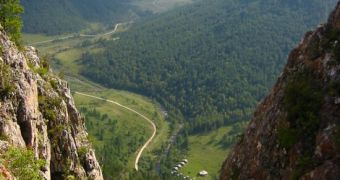A team of investigators working in the Denisova Cave in southern Siberia, Russia, was able to show that a distinct population of “archaic” humans lived outside Africa at a time when Neanderthals ruled Europe and Asia, some 30,000 years ago.
Genetic tests conducted on a bone recovered from the cave in 2008 show that this particular group was not related to the Neanderthals. Additionally, it was discovered that some of its members must have interbred with some of our ancestors.
This research was conducted using funds provided partially by the US National Science Foundation (NSF) Behavioral and Cognitive Sciences Division, as well as other sources.
Details of the study were published in the latest issue of the esteemed scientific journal Nature. The work was conducted by experts at the Max Planck Institute of Evolutionary Anthropology in Leipzig, Germany
The international group, led by MPIEA expert Svante Pääbo, used genetic data and dental analysis to arrive at this conclusion. The archaic humans were called Denisovans, after the name of the cave where their remains were uncovered.
Initially, a team from the Russian Academy of Sciences identified the bone fragments. The finger bone of a 5-10-year-old girl was the main evidence that was analyzed for genetic material, alongside a tooth.
“The tooth is just amazing. It allows us to connect the morphological and genetic information,” explains MPIEA paleoanthropologist Bence Viola.
Denisova hominins were established to be an evolutionarily distinct group. They were apparently related to neither Neanderthals or modern humans.
In-depth analysis revealed that they did share an ancient origin with the former, but also revealed that this particular population took a different evolutionary route.
In a related study, it was revealed that Denisovan DNA makes up around 4 to 6 percent of the genomes of present-day New Guineans.
“They are ancestors of people in Papua New Guinea but not of the great majority of people in Eurasia,” explains Harvard Medical School geneticist David Reich, the leader of the population genetics analysis part of the research.
“We have now found evidence for a second gene flow event as well from a different source population and into a narrower set of modern human groups,” says Reich.
“The first gene flow event appears to have been from a population closely related to the Neanderthals, while the second gene flow event was from a population much more closely related to Denisovans,” he concludes.

 14 DAY TRIAL //
14 DAY TRIAL //